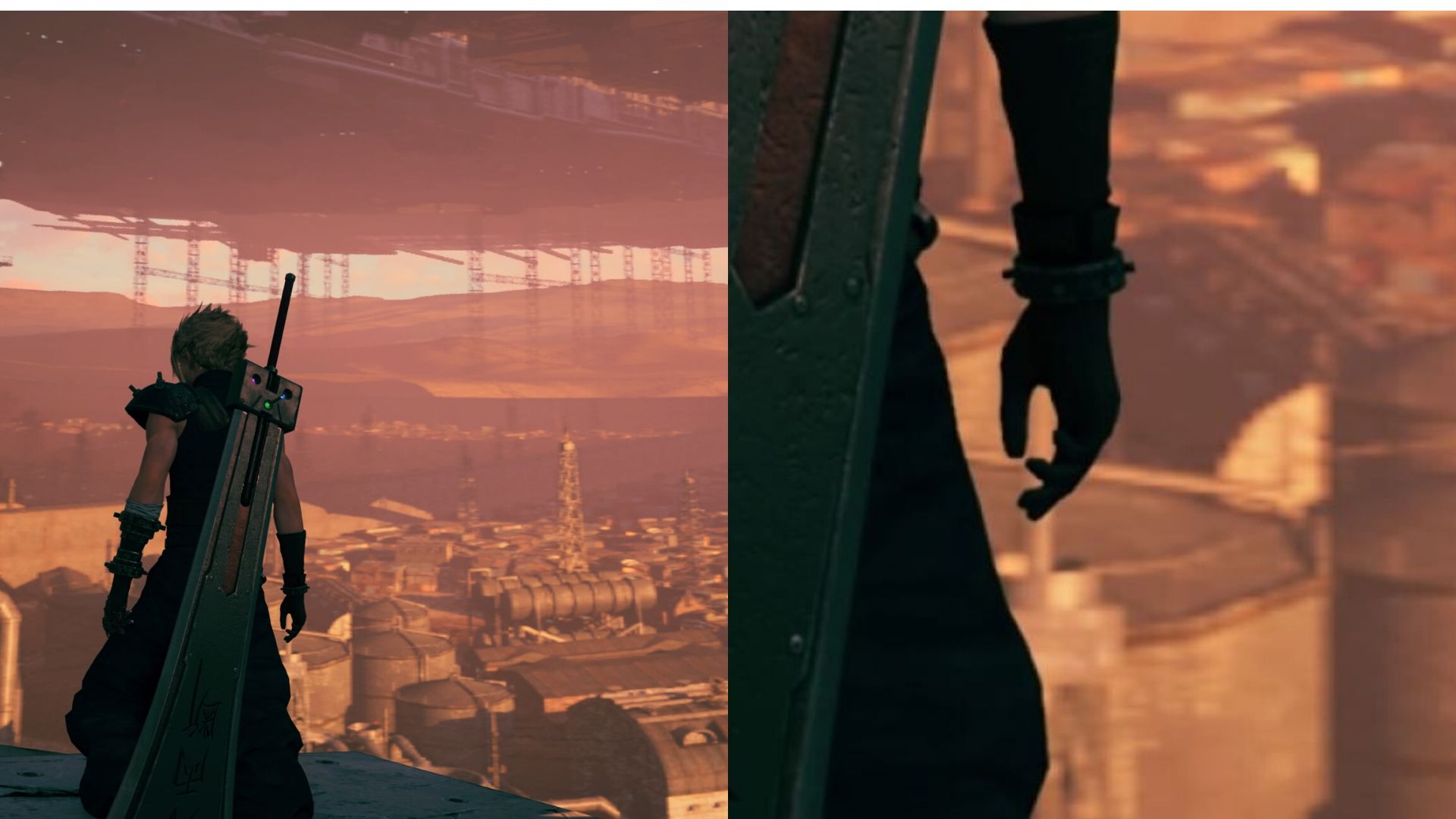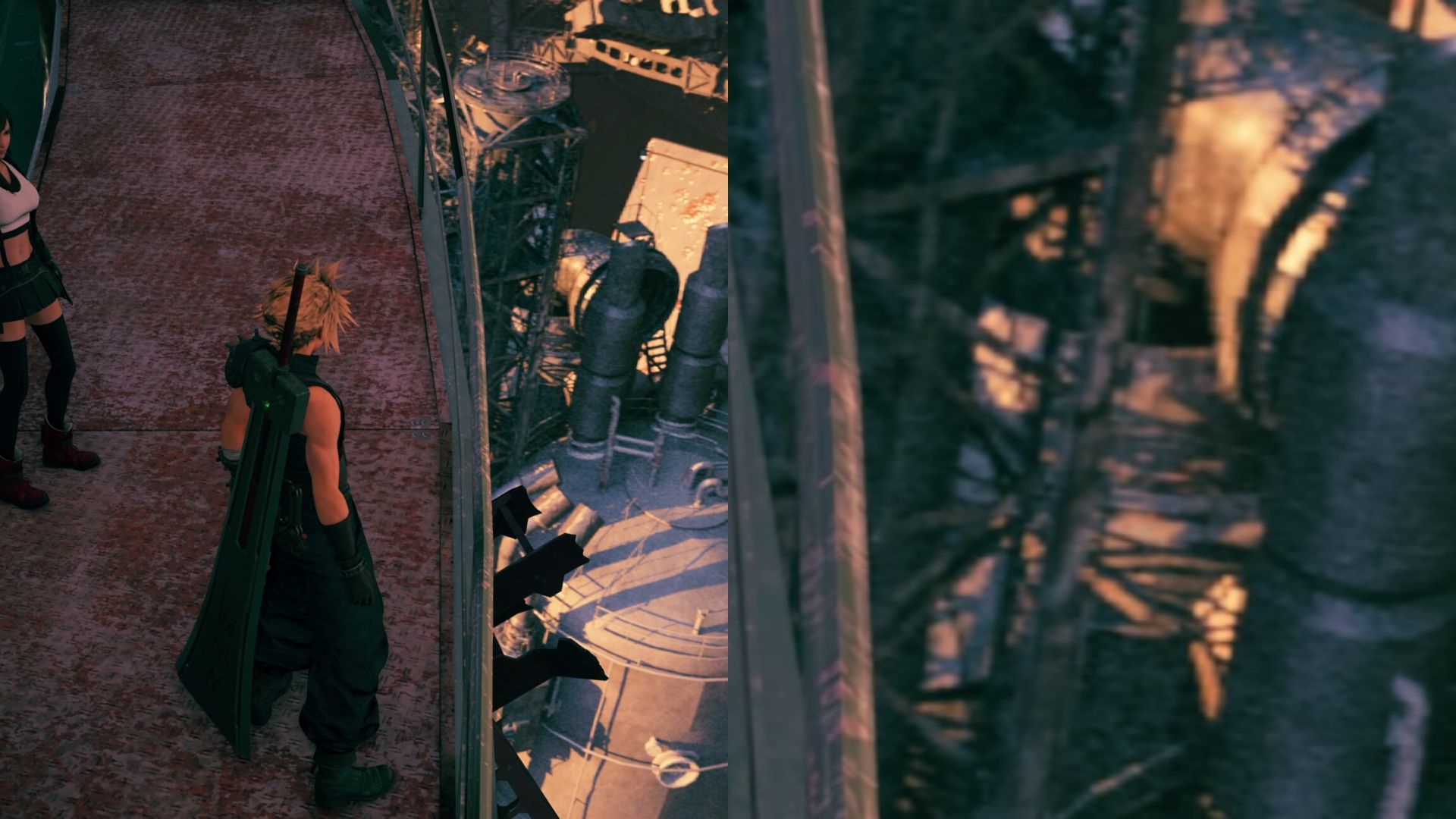Final Fantasy as a franchise is marked by a deep commitment to showing you something new and amazing on your screen. In the original Final Fantasy VII from 1998, that goal was helped along by detailed pre-rendered backgrounds and seamless transitions from video to gameplay. The newly-released Final Fantasy VII Remake is also a bombastic spectacle that pulls from the same bag of tricks, updated for a new era of hardware and stylistic expectations.
But as I soaked in Remake's lavish production and operatic story, there was one thing that I couldn't ignore: the highly detailed pre-rendered cityscapes kind of look like crap.
This wasn’t necessarily bad, but it was weird. Final Fantasy VII Remake is about as as triple-A gets. We're talking near-Pixar levels of artistic vision and execution. And Remake even calls back to what made the original so groundbreaking with seamless transitions and, yes, epic pre-rendered vistas of Midgar's cyberpunk-fantasy greebling.
Mostly, these backgrounds (I suppose you would call them skyboxes, or maybe cityboxes given that there's not much sky going on) convey a sense of scale and detail that you simply don't see in most video games. It's awesome. But after a moment, your eyes start to notice something else you don't usually see: the vistas look noticeably flat and low-resolution next to the characters and foreground. Imagine if, in Grand Theft Auto V, you looked out from a hilltop and it wasn't just the sky that was pre-rendered in exquisite detail against simple 3D skyscraper meshes, but the buildings, people, cars, everything, all drawn in dense, frantic detail, but with a light vaseline smear.
It is certainly a bold artistic choice, and mostly it works, but blown up on a TV screen it can look downright odd . Squint, though, and the illusion comes back. Let me show you what I mean, as best I can through images on a webpage:


Two-thirds of my way through the game, I became moderately obsessed by the question of how these cityboxes, which are so key to the game's overall visual effect, could also be so flawed in such a high-stakes production. And so to find out more, I called up Mike Snight, a games artist and developer who has worked on titles such as Bioshock: Infinite.
Snight informed me on how skyboxes are done today: Generally, they're a dome over the game world that's mapped with a very high-resolution texture of, typically, the sky (perhaps a real photo or a matte painting), with some added tricks to ensure it looks believable from the player perspective. "Skyboxes get a lot of attention from game developers because they take up so much screen real estate," Snight said.
In most cases, developers will use tricks such as cutting out parts of the dome and layering them on "cards" to add visual depth, or add shader or masking effects to pop out certain buildings. Generally, the biggest change between 1998 and now is that developers will typically bring some elements from the background—for example, the far-off skyscrapers in Grand Theft Auto V—into 3D space with simple geometry.
"You can get away with a lot, and part of cheating is to save time and it also saves performance," Snight said. "Using a card instead of geometry is way cheap, and the player never knows."
According to Snight, the skyboxes in Final Fantasy 7 Remake appear to be gigantic matte paintings with a few of these tricks: a bit of geometry here, falling off into cards there.
"That doesn't surprise me. Usually that's super cheap from a performance aspect," he said. "One thing to remember, too, is the type of the game. I know you're going to run up and look at the skybox but there's a lot of battle sequences and action, and a lot of times they won't take the time to do that if they're focusing more on the character interactions and the foreground art for where the characters are walking around."
Video games, like films, are funhouses run by invisible magicians. You are amazed, entranced, as long as you don't look behind the curtain and see that it's all held together by duct tape and a prayer. And like film, video games are a business and have to make compromises around time and money while striving to achieve an artistic vision. It is probably one of the more difficult things anyone can do. And, as Digital Foundry said in its technical breakdown of Final Fantasy VII Remake, the game is clearly walking a tightrope regarding what to focus on in order to wow and immerse the player. Some areas look better than others. But more often than not, the illusion works its magic—mysterious texture issues abound, but go unnoticed by most amid the overall spectacle.
"There's probably many reasons; it could be performance related," Snight said. "But I mean, it does look really good."
Along with Final Fantasy VII Remake, this season of pandemic has seen me playing a lot of Call of Duty: Warzone. The world of Call of Duty is visually boring and dead, but all rendered in extremely high resolution. Low detail, high fidelity. Final Fantasy VII Remake is exactly the opposite: high detail, low fidelity. It's pointless to compare the two games except to show that they represent different philosophies: hard-nosed realism in games versus, well, fantasy. You could also call it artistry, or craft.
I'm still not sure of the exact reason why Midgar's cityboxes look low-res, nor if it can or will be fixed with a patch or a PC release, but I do know that they represent a risky decision that balanced resources against vision.
Even if they sometimes emphasize their own artifice, like the epic matte painting backgrounds in old films, the cityboxes of Final Fantasy VII Remake represent a flawed and ambitious artistry not often seen in video games. Remake is a game about paying homage to the past while defying expectations—you literally defeat fate—and by the time I finished Cloud and the gang's fight to break out of Midgar, my initial nitpick about fuzzy backgrounds seemed like exactly the reaction the game wanted to elicit.
from VICE https://ift.tt/2AKLecq
via cheap web hosting
No comments:
Post a Comment